Welcome to “From Water Quality to Feeding Habits: A Comprehensive Guide to Successful Fishpond Management.” Whether you’re a seasoned pond owner or just starting, this blog is your go-to resource for all things related to managing a thriving Fishpond.
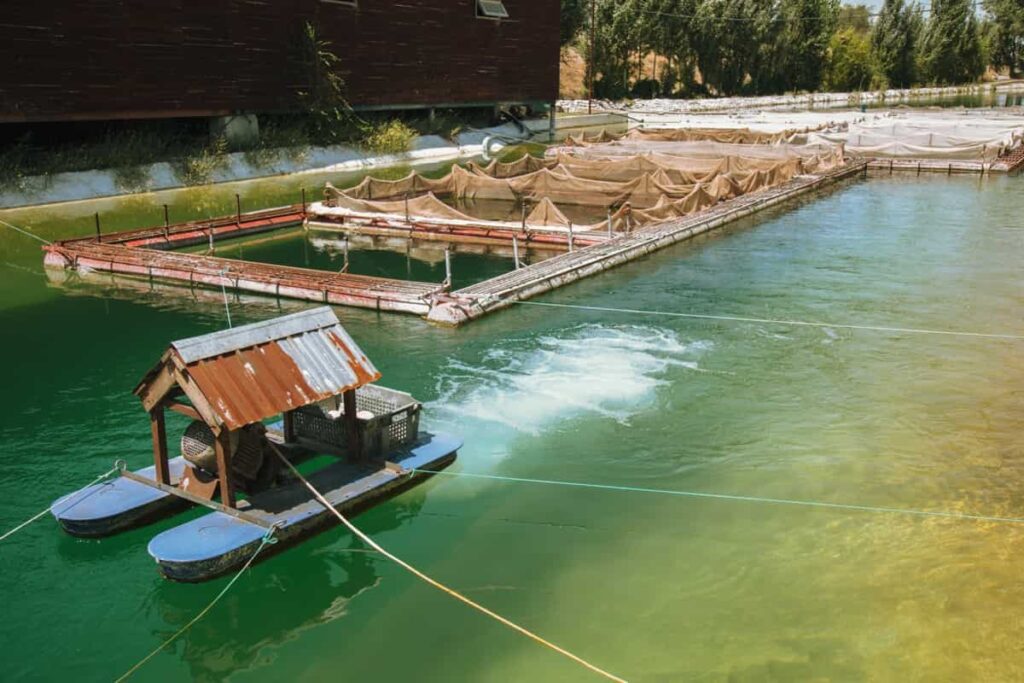
We’ll cover essential topics such as maintaining optimal water quality, understanding and addressing common fish diseases, effective feeding habits, and much more. We aim to provide accurate data to help you make informed decisions for your Fishpond. Get ready to dive into the world of Fishpond management and unlock the secrets to a healthy and vibrant aquatic ecosystem.
Guide to Successful Fishpond Management
What is Fishpond Management?
Fishpond management refers to the systematic approach of maintaining and optimizing the health and productivity of a Fishpond. It involves various tasks such as monitoring water quality parameters, stocking appropriate fish species, providing proper nutrition, controlling pests and predators, managing aquatic vegetation, and ensuring a balanced ecosystem. Effective Fishpond management aims to create an environment that supports fish growth, reproduction, and Management.
Types of Fishpond Management: There are two main types of Fishpond management: extensive and intensive. Extensive Management involves low stocking densities and relies on natural food production. Intensive Management involves high stocking densities, regular feeding, and other systems like aeration and filtration. The choice depends on pond size, water quality, and fish species.
How to Construct a Fishpond: Constructing a Fishpond involves careful planning. The steps include site selection, pond design, excavation, pond lining, inlet and outlet installation, and establishing a water supply. Fish stocking with desired species is the final step.
Benefits of a Fishpond: Fishponds offer increased food production, income generation, and environmental sustainability. They also provide recreational opportunities such as fishing and boating.
Fish Species for Fishponds: Tilapia, catfish, carp, and trout are commonly reared in Fishponds. Tilapia is fast-growing and hardy, while catfish has high market demand. Carp is well-suited for extensive culture, and trout requires high-quality water and cooler regions.
In case you missed it: Project Report of Pangasius Fish Farming: Cultivation Economics, Production Cost, and Profit Analysis
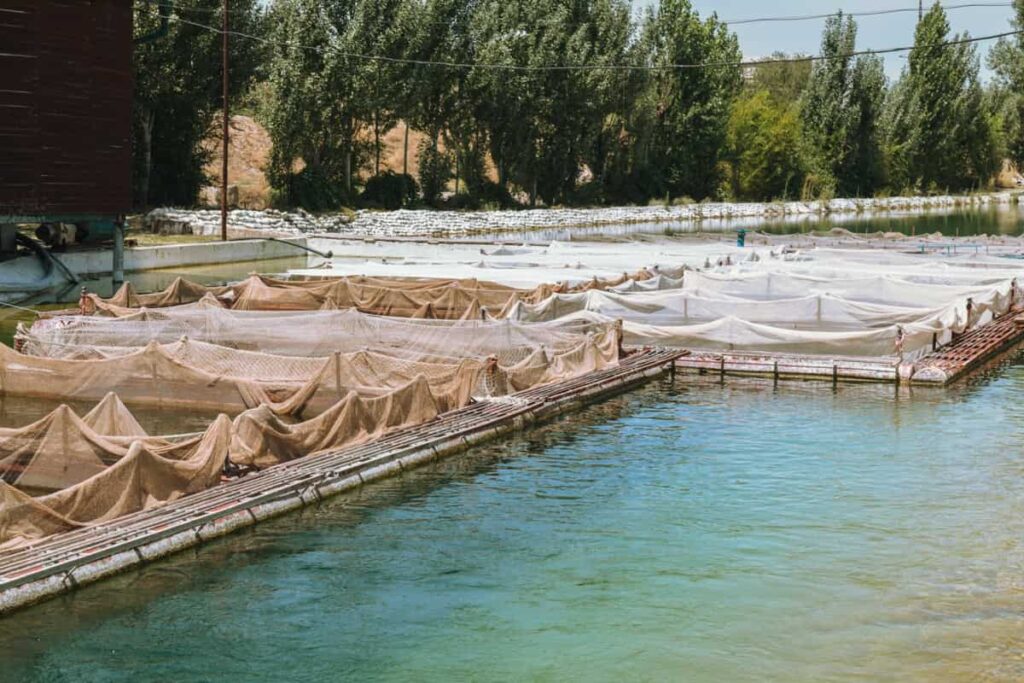
Fishpond Management Techniques
- Regular Water Quality Monitoring: Regularly test water parameters like pH, ammonia, nitrites, and dissolved oxygen levels to ensure a healthy aquatic environment.
- Stocking Considerations: Choose appropriate fish species for the pond’s size, climate, and water quality. Avoid overstocking to prevent stress and competition.
- Feeding Practices: Implement a consistent and balanced feeding schedule to meet the nutritional needs of the fish. Avoid overfeeding, as excess feed can lead to water quality issues.
- Aeration Systems: Aeration devices like diffusers or fountains increase dissolved oxygen levels, promoting fish health and preventing oxygen-related problems.
- Algae and Weed Control: Employ strategies to control algae and weed growth, such as manual removal, biological control, or safe chemical treatments, to maintain water clarity and prevent oxygen depletion.
- Disease Monitoring and Prevention: Regularly inspect fish for signs of diseases and take preventive measures, such as quarantine procedures for new fish, to avoid spreading infections.
- Predator Management: Implement measures to protect fish from predators like birds, mammals, and other aquatic animals using deterrents or netting.
- Filtration Systems: Install appropriate filtration systems to remove excess waste and maintain water quality, reducing the risk of toxic buildup.
- Habitat Enhancement: Add structures like rocks, plants, and submerged logs to create hiding places and breeding areas for fish, enhancing their overall well-being.
- Regular Maintenance: Perform routine pond cleaning and debris removal to prevent nutrient buildup and maintain a clean environment for fish.
Fishpond Construction Techniques and Management
- Site Selection: The optimal size and placement for the fishpond are determined by site selection. The site should be on rich clay soil to minimize water seepage.
- Reconnaissance: Extension personnel conducts a careful survey to establish the height, volume of soil for the dyke, total water surface area, and volume of water in the pond or embracement.
- Clearing and Stumping: The site is cleared and stumped by removing debris, cutting trees, and stumping.
- Dam Construction: Dams are often built across streams using high-quality materials such as clay soil to contain water.
- Core Trench Construction: The core trench is built by removing dirt or excavating at a right angle to the dam and utilizing wood and wire-mesh screens for the spillway.
- Filling the Pond with Water: Filling the pond with water is accomplished by opening the reservoir’s monk board, releasing water, and releasing water.
- Liming the Pond: Liming a fishpond uses limestone or calcium carbonate powder to plug holes, minimize water loss, and promote plankton development.
- Pond Fertilization: Pond fertilization is another crucial part of fishpond architecture since it promotes plankton development and reduces water acidity.
In case you missed it: Project Report of RAS Fish Farming: Production Economics, Cost, and Profit Analysis
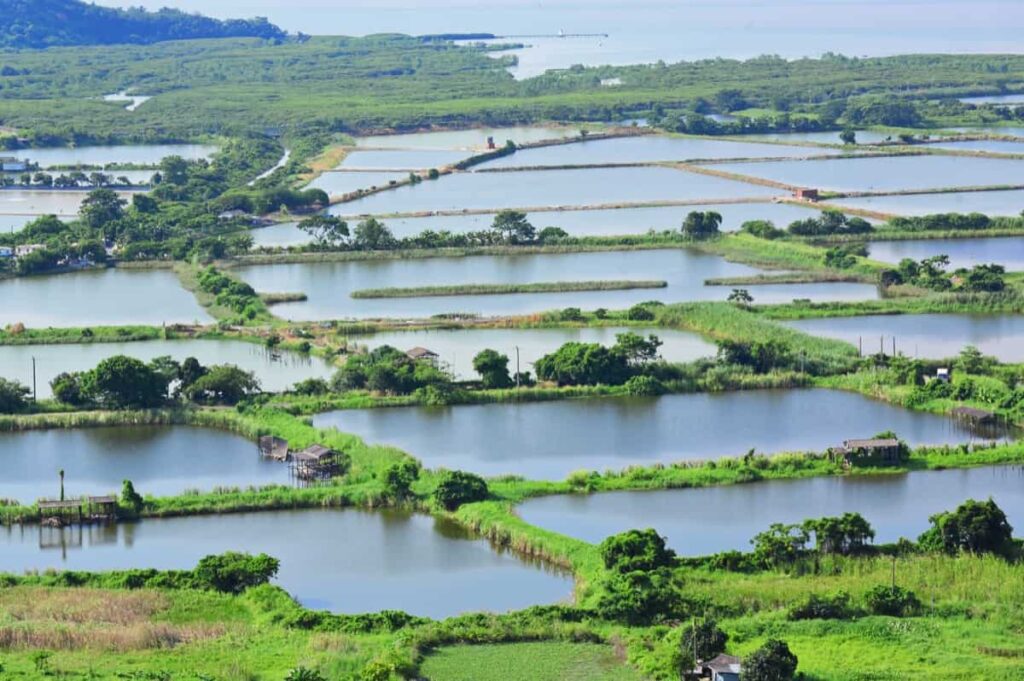
How to Maintain a Healthy Fishpond
Maintaining a healthy Fishpond is needed for the well-being of the aquatic ecosystem. Regular water quality monitoring, including pH, ammonia, and oxygen levels, is essential. Proper fish feeding with balanced nutrition helps prevent overfeeding and water pollution. Regularly remove debris and control algae growth to maintain water clarity. Preventing and treating fish diseases promptly ensures a thriving pond environment. Regular maintenance and attention to detail will lead to a vibrant and sustainable Fishpond.
Fishpond Stocking Recommendations
Fishpond stocking recommendations depend on the pond’s size, water quality, and intended purpose. The stocking density, or the number of fish per unit area, should be appropriate to avoid overcrowding and ensure optimal growth and health. The general guideline for warm-water fish is to stock at a rate of 500 to 1,000 fish per acre. However, a lower stocking rate of around 200 to 500 fish per acre is recommended for cold-water fish species.
Best Practices for Fishpond Aeration
Adequate oxygen levels are vital for fish respiration, nutrient cycling, and preventing harmful algal blooms. Best practices for Fishpond aeration involve strategic placement of aerators to ensure effective oxygen distribution throughout the pond. Installing diffused aeration systems, such as air stones or diffusers, is recommended as they create fine bubbles that maximize the oxygen transfer rate. The size and depth of the pond and the fish population should be considered when determining the number and capacity of aerators needed.
Controlling Algae in Fishponds Fishpond
Excessive algae growth can lead to decreased oxygen levels, poor water quality, and even harm fish. One effective method is algaecides, chemicals designed to kill or inhibit algae growth. Copper sulfate is a commonly used algaecide that targets various types of algae. Another approach is introducing beneficial aquatic plants that compete with algae for nutrients and sunlight. Implementing aeration systems and regular water circulation can also help disrupt algae growth.
Water Quality Management in Fishpond
Importance of Water Quality: Water quality is crucial to Fishpond’s overall health and productivity. Proper water quality ensures optimal growth, reproduction, and survival of fish.
Factors Affecting Water Quality: Temperature: Fish have specific temperature requirements, and fluctuations can stress them. Dissolved Oxygen: Adequate oxygen levels are essential for fish respiration. pH Levels: Fish have specific pH tolerances, and deviations can impact their health. Ammonia and Nitrite Levels: High ammonia and nitrite levels are toxic to fish.
Monitoring Water Quality: Regularly test water parameters using appropriate test kits. Key monitoring parameters include temperature, dissolved oxygen, pH, ammonia, and nitrite levels.
In case you missed it: Project Report of Biofloc Fish Farming: Production Economics, Cost, and Profit Analysis
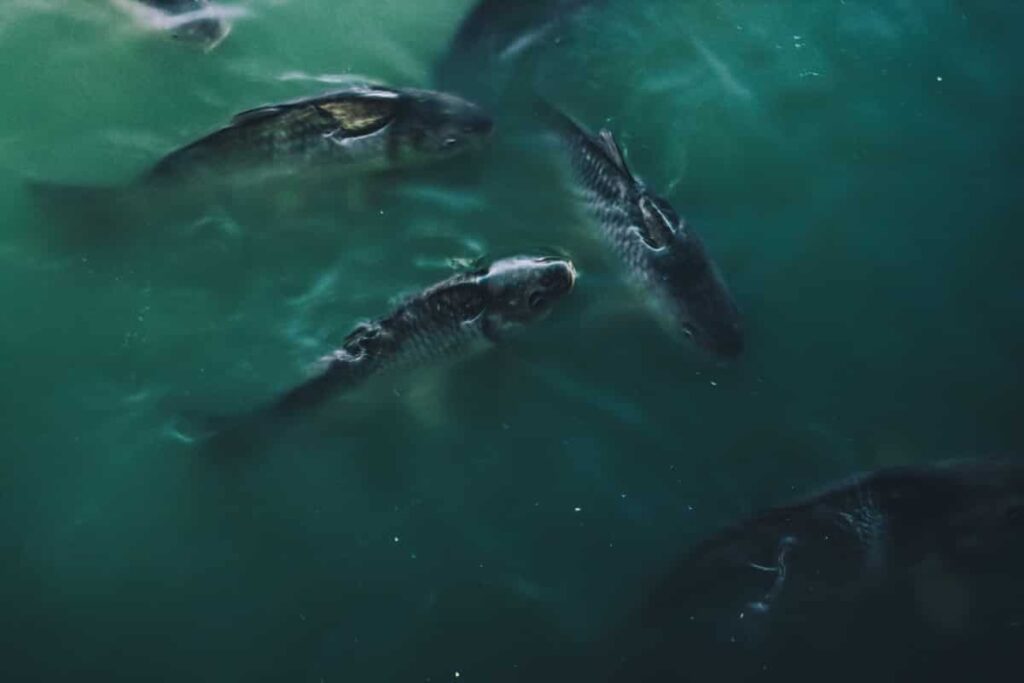
Maintaining Water Quality: Adequate aeration and oxygenation systems help maintain dissolved oxygen levels. Proper filtration systems remove debris and excess nutrients and maintain water clarity. Regular water exchanges or additions can dilute harmful substances and stabilize water quality.
Nutrient Management: Excessive nutrient levels can lead to algae blooms and poor water quality. Avoid overfeeding and control the input of nutrients from external sources.
Algae Control: Algae can deplete oxygen levels and create poor water conditions. Implement strategies such as proper nutrient management, shading, and biological control to control algae growth.
Disease Prevention: Maintaining good water quality helps prevent the outbreak of fish diseases. Clean water, proper filtration, and regular health monitoring contribute to disease prevention.
Filtration Systems Managing
Filtration systems are essential for Fishpond management, ensuring water quality and a healthy aquatic environment. They play a vital role in removing debris, excess nutrients, and harmful substances from the water. Various types of filtration systems are available, such as mechanical, biological, and chemical filters, each serving specific purposes.
Mechanical filters physically trap large particles, while biological filters foster beneficial bacteria to break down organic waste. Chemical filters help remove specific contaminants. Combining these filtration methods optimizes water clarity and maintains balanced water parameters, contributing to the overall well-being and success of the Fishpond.
Fish Diseases in Ponds
Fish diseases in ponds can have detrimental effects on fish health and productivity. Poor water quality, overcrowding, and the introduction of infected fish contribute to disease outbreaks. Common fish diseases include bacterial, parasitic, and fungal infections. Preventing and treating these diseases requires proper water quality management, quarantining new fish, regular health checks, and early detection.
Treatment options may involve medicated baths, antibiotics, or antiparasitic medications. Implementing biosecurity measures, such as maintaining clean equipment and preventing cross-contamination, is crucial in preventing disease introduction and spread.
Fishpond Feeding and Nutrition
- Commercially produced feeds can be complete or supplemental. Complete diets provide all fish growth and health ingredients, including protein, carbohydrates, fats, vitamins, and minerals.
- Protein is an essential component of fish feed, and its requirements vary depending on the species and life stage of the fish. Essential amino acids like lysine and methionine are crucial for fish growth.
- Protein levels in aquaculture feeds range from 28-45 percent, with herbivorous and omnivorous fish requiring lower protein levels than carnivorous fish. High-density systems may require higher protein levels.
- Lipids (fats) are high-energy nutrients in fish diets and can partially spare protein. They comprise about 7-15 percent of fish diets and are a source of fatty acids like omega-3 and omega-6.
- Carbohydrates are included in fish diets to reduce costs and aid in feed manufacturing. Fish does not efficiently use them for energy but can provide up to 20 percent of dietary energy.
- Vitamins are necessary for fish growth and health. Water-soluble vitamins like vitamin C are important for the immune system, while fat-soluble vitamins like vitamin E act as antioxidants.
- Macrominerals (e.g., calcium, phosphorous) and microminerals (e.g., iron, zinc) are required for normal body functions and bone formation. Fish can absorb minerals from water to compensate for deficiencies in their diet.
- Energy and protein are essential for fish growth and other life processes. The proper balance between protein and energy in the diet is crucial for optimal growth. Excessive energy can lead to lipid deposition, while inadequate energy can reduce weight gain.
- Commercial fish diets are available as extruded (floating) or pressure-pelleted (sinking) feeds. Floating feeds allow farmers to observe feeding intensity, while some fish species prefer sinking feeds.
- Feeding rates and frequencies depend on fish size and can vary throughout the fish’s life stage. Small fish require high-protein diets and frequent feeding, while larger fish can be fed less frequently. Feeding frequency affects growth and feed conversion.
In case you missed it: Fish Farm Operations Management: Month-wise Maintenance for Better Profits
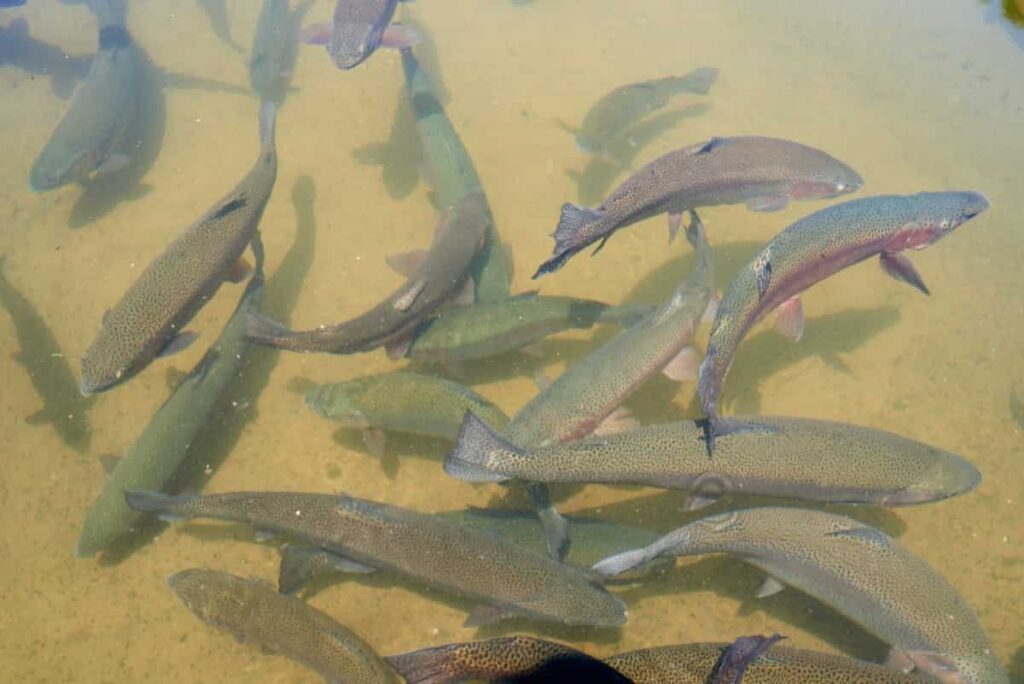
Fishpond Predator Control Methods
The effectiveness of Fishpond predator control depends on electrified perimeter fences, bird scare devices, aeration, and water ripples, beneficial fish introduction, snail removal, plant coverage, artificial floating islands, and decoy animals. These methods disrupt predator access, resulting in a 95% survival rate for protected fish.
Fishpond Weed Control Strategies
Effective strategies for fishpond weed control include mechanical removal, herbicides, biological control, bottom barriers, shade management, nutrient management, and water circulation. Mechanical removal involves removing weeds using rakes or nets, resulting in an 80% reduction in weed coverage.
Herbicides achieve up to 90% weed control, while biological control introduces natural enemies like grass carp or weevils, reducing weed biomass by 70%. Bottom barriers prevent weed growth by installing geotextile or plastic barriers, controlling sunlight exposure, and balancing nutrient levels. Proper nutrient management can decrease weed proliferation by 75%, and improved water circulation can inhibit weed expansion by 85%.
Fishpond Maintenance Management
- Regular Feeding: Feed the fish twice daily with sufficient compound feed to promote rapid growth and early maturity.
- Deweeding: Remove weeds from the pond to enhance oxygen dissolution, sunlight penetration, and the growth of fish food (plankton). It also prevents the accumulation of pests and diseases.
- Desilting: Remove or prevent silt from entering the pond to maintain clean water, facilitate fish movement, and prevent water pollution.
- Aeration: Ensure proper aeration to dissolve oxygen in the water, as fish tend to come to the surface when oxygen is lacking. Weeds, organic manure, and overstocking can hinder proper aeration.
- Constant Water Supply: Keep the pond filled with water and address any leakages promptly.
- Predator Control: Prevent predators like birds and snakes from entering the pond by maintaining a clean surrounding through regular weeding.
- Disease Prevention: Prevent diseases by providing adequate feeding, stocking, maintaining a suitable temperature, proper manuring, and regular weeding.
- Regular Harvesting: Conduct regular fish harvests to prevent overpopulation, disease outbreaks, and cannibalism. Harvesting can be done six months after stocking using nets or draining the pond.
- Fertilizer Application: Apply fertilizer once a month to promote the growth of fish food (plankton) in the pond.
In case you missed it: Fish Hatchery Business Plan: How to Start, Cost, Profits, and a Great Way to Make Money
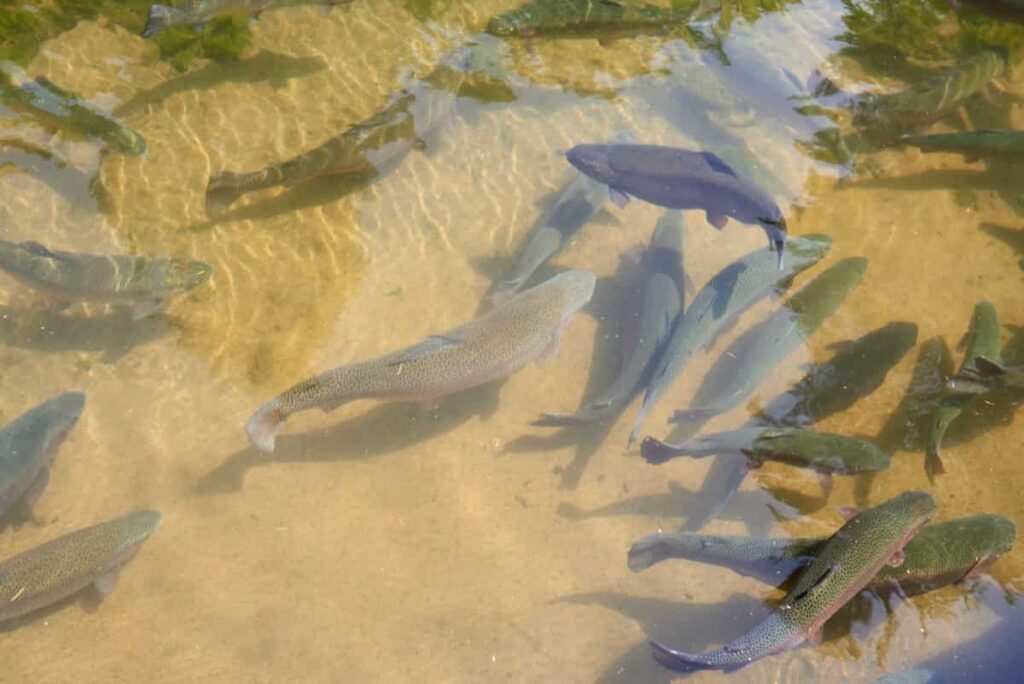
Conclusion
Successful fishpond management encompasses various factors, from maintaining water quality to understanding feeding habits. By prioritizing water quality, proper feeding, and regular monitoring, fishpond owners can create an optimal environment for healthy fish growth and maximize their pond’s productivity.
- Management Pests and Diseases in Your Cotton Field
- Sheep Farming Business Plan for Beginners
- Aquaponic Farming at Home: A Step-By-Step Guide
- Profitable Village Farming Business Ideas in 2024
- High-Yield Aquaculture: Fast-Growing Fish for Farming
- Effective Fish Pond Construction Techniques for Beginners
- Irrigation and Water Management in Pineapple Farming
- Blossom to Harvest: Mastering Flowering and Pollination in Papaya Farming
- Pig Fattening Essentials: From Selection to Sale for Beginners
- Raising Wagyu Cattle: A Complete Guide for Premium Beef Production
- Soil Types and Their Water Holding Capacity
- Optimizing Irrigation Schedules for Coconut Groves for Enhanced Yield
- Espresso Your Garden: Coffee Grounds for Healthier Acid-Loving Plants
- The Best Soil Mix for Snake Plants: How to Mix Your Own Snake Plant Soil
- Green Thumb Success: Expert Tips for Cultivating Greenhouse Beans All Year Round
- Bloom All Year Round: The Ultimate Guide to Indoor Hyacinth Care
- Eco-Friendly Gardening: How to Make Liquid Fertilizer from Kitchen Waste
- Ultimate Guide to Grow Anise in Pots: Explore Seed Propagation to Harvesting
- Guide to Raising Chester White Pigs: Discover Breed Facts to Growth Management
- Mastering the Elegance: The Ultimate Guide to Weeping Cherry Tree Care, Planting, and Maintenance
- Ultimate Guide to Planting Garlic in Grow Bags: Growing Strategies for Beginners
- How to Fix Spider Plant Leaf-Related Problems: Natural and Organic Remedies
- 10 Reasons Why Your Tulsi Plant is Shedding Leaves: Home Remedies and Solutions
- Optimizing Growth and Yield: The Advantages of Palm Bunch Ash Fertilizer
- Utilizing Neem Oil Extract as a Natural Pesticide for Hydrangea
- From Soil to Harvest: Various Ways in Which Farmers Can Use AI Tools
- Steps to Encourage and Induce Citrus Flowers: A Comprehensive Guide
- How to Fix Snake Plant Leaf-Related Issues: Natural and Organic Remedies
- Transform Your Garden into a Fragrant Oasis with Raat Ki Rani (Night Blooming Jasmine)
- Discover the Ideal Chicken Breeds for Philippine Farms
- How to Create a Poultry Egg Farm Business Plan for Profits
- Grow Lemon Cucumbers Like a Pro: Insider Techniques for Bountiful Yields
- Ultimate Guide to Caring for Your Pink Princess Philodendron: Tips for Thriving Variegation
- Areca Nut Profit Per Acre: Calculating Yield and Cost of Cultivation
- How Kaveri Chicken is Becoming a More Profitable Breed in Indian Backyards
- Transform Your Barn: 9 Steps to Convert a Horse Stall into a Chicken Coop
